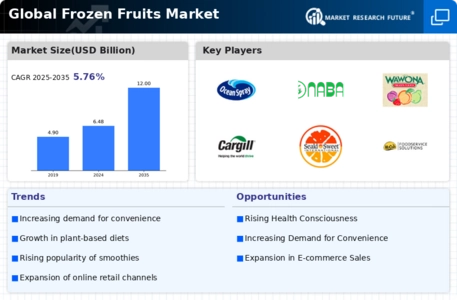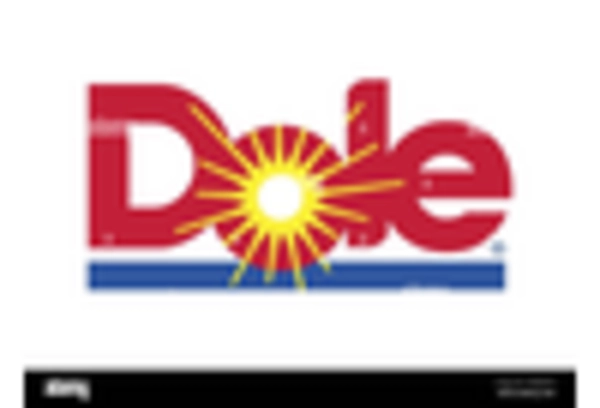E-commerce Growth
The rapid growth of e-commerce is significantly impacting The Global Frozen Fruits Industry. With the increasing penetration of the internet and mobile devices, consumers are turning to online platforms for their grocery shopping needs. This shift is particularly evident in the frozen fruits segment, where convenience and accessibility are paramount. Recent data shows that online grocery sales have surged, with frozen fruits being one of the top-selling categories. The ease of purchasing frozen fruits online, coupled with the ability to compare prices and read reviews, enhances consumer confidence. As a result, many traditional retailers are expanding their online presence to capture this growing market segment. This trend indicates that e-commerce will continue to be a vital channel for the distribution of frozen fruits, potentially leading to increased sales and market expansion.
Sustainability Initiatives
Sustainability initiatives are becoming increasingly influential in shaping The Global Frozen Fruits Industry. As consumers become more environmentally conscious, there is a growing demand for products that are sourced and packaged sustainably. This shift is prompting companies to adopt eco-friendly practices, such as using biodegradable packaging and sourcing fruits from sustainable farms. Recent statistics indicate that brands that emphasize sustainability in their marketing strategies experience a 20% increase in consumer preference. Furthermore, the implementation of sustainable practices not only appeals to eco-conscious consumers but also enhances brand loyalty. As the market evolves, companies that prioritize sustainability are likely to gain a competitive edge, thereby driving growth in the frozen fruits sector. This trend suggests that sustainability will play a crucial role in the future landscape of the industry.
Health-Conscious Consumption
The rising trend of health-conscious consumption is a pivotal driver for The Global Frozen Fruits Industry. Consumers are increasingly prioritizing nutritious food options, leading to a surge in demand for frozen fruits, which retain essential vitamins and minerals. According to recent data, the frozen fruit segment is projected to grow at a compound annual growth rate of approximately 5.5% over the next five years. This growth is attributed to the increasing awareness of the health benefits associated with fruits, such as antioxidants and dietary fiber. As more individuals seek convenient yet healthy meal options, the appeal of frozen fruits as a versatile ingredient in smoothies, desserts, and snacks becomes more pronounced. Consequently, this trend is likely to bolster the market, as manufacturers respond by expanding their product lines to include a wider variety of frozen fruit offerings.
Innovative Product Development
Innovative product development is a key driver in The Global Frozen Fruits Industry. As consumer preferences evolve, manufacturers are increasingly focusing on creating new and unique frozen fruit products. This includes the introduction of exotic fruit blends, organic options, and ready-to-eat frozen fruit snacks. Recent market analysis suggests that innovative products can lead to a 15% increase in sales for companies that successfully tap into emerging trends. Additionally, the incorporation of superfoods and functional ingredients into frozen fruit offerings is gaining traction, appealing to health-conscious consumers. This emphasis on innovation not only attracts new customers but also encourages repeat purchases, thereby fostering brand loyalty. As the market continues to evolve, the ability to innovate will likely be a determining factor for success in the frozen fruits sector.
Rising Demand for Convenience Foods
The rising demand for convenience foods is a significant driver of The Global Frozen Fruits Industry. As lifestyles become busier, consumers are increasingly seeking quick and easy meal solutions. Frozen fruits offer a convenient option for those looking to prepare healthy meals without the time-consuming process of washing, peeling, and chopping fresh fruits. Recent surveys indicate that nearly 60% of consumers prefer frozen fruits for their ease of use in meal preparation. This trend is particularly pronounced among working professionals and families, who value the time-saving aspect of frozen fruits. Consequently, manufacturers are responding by enhancing their product offerings, such as pre-packaged fruit mixes and single-serving portions. This focus on convenience is likely to continue driving growth in the frozen fruits market, as more consumers prioritize efficiency in their food choices.


















Leave a Comment